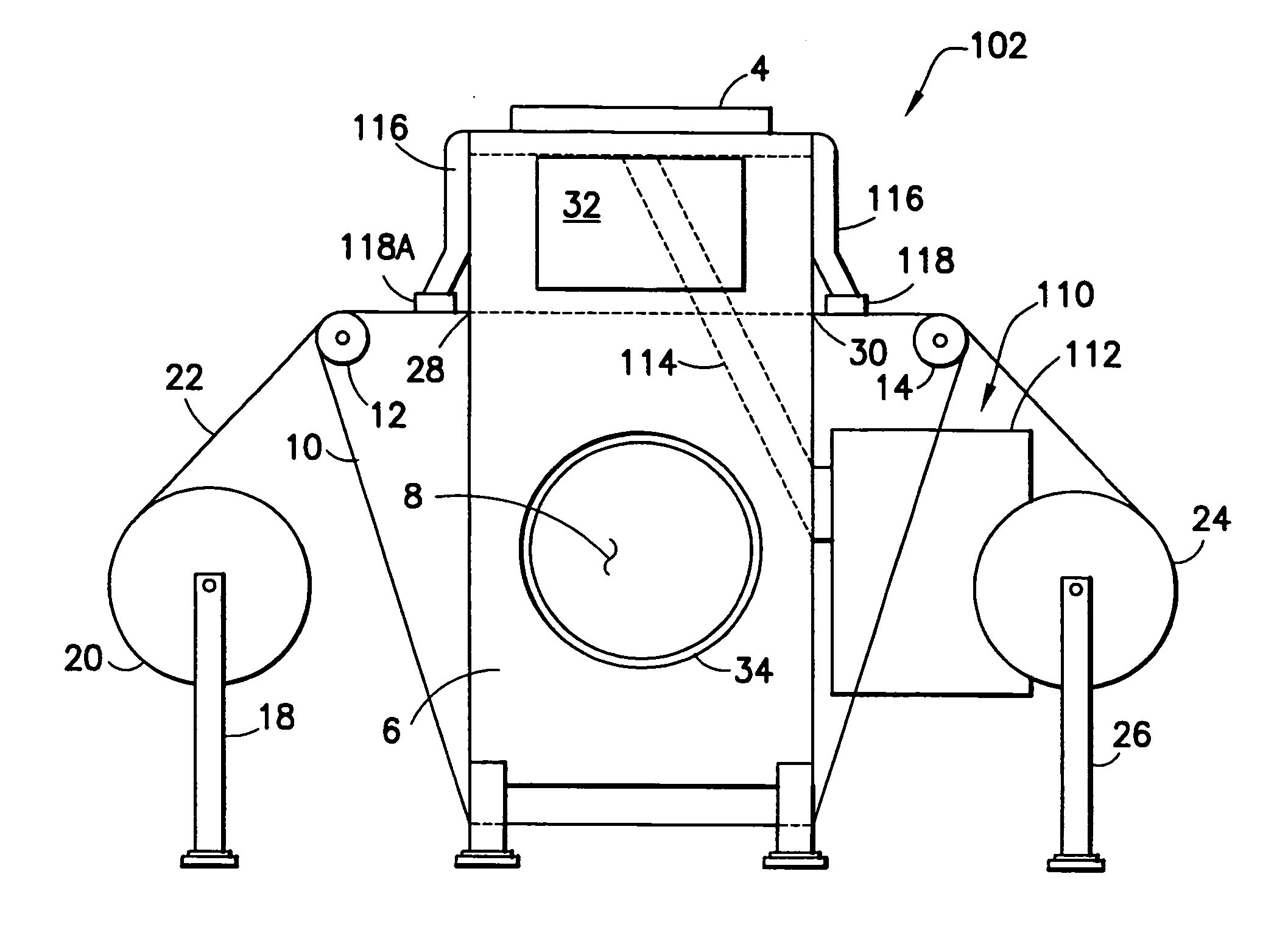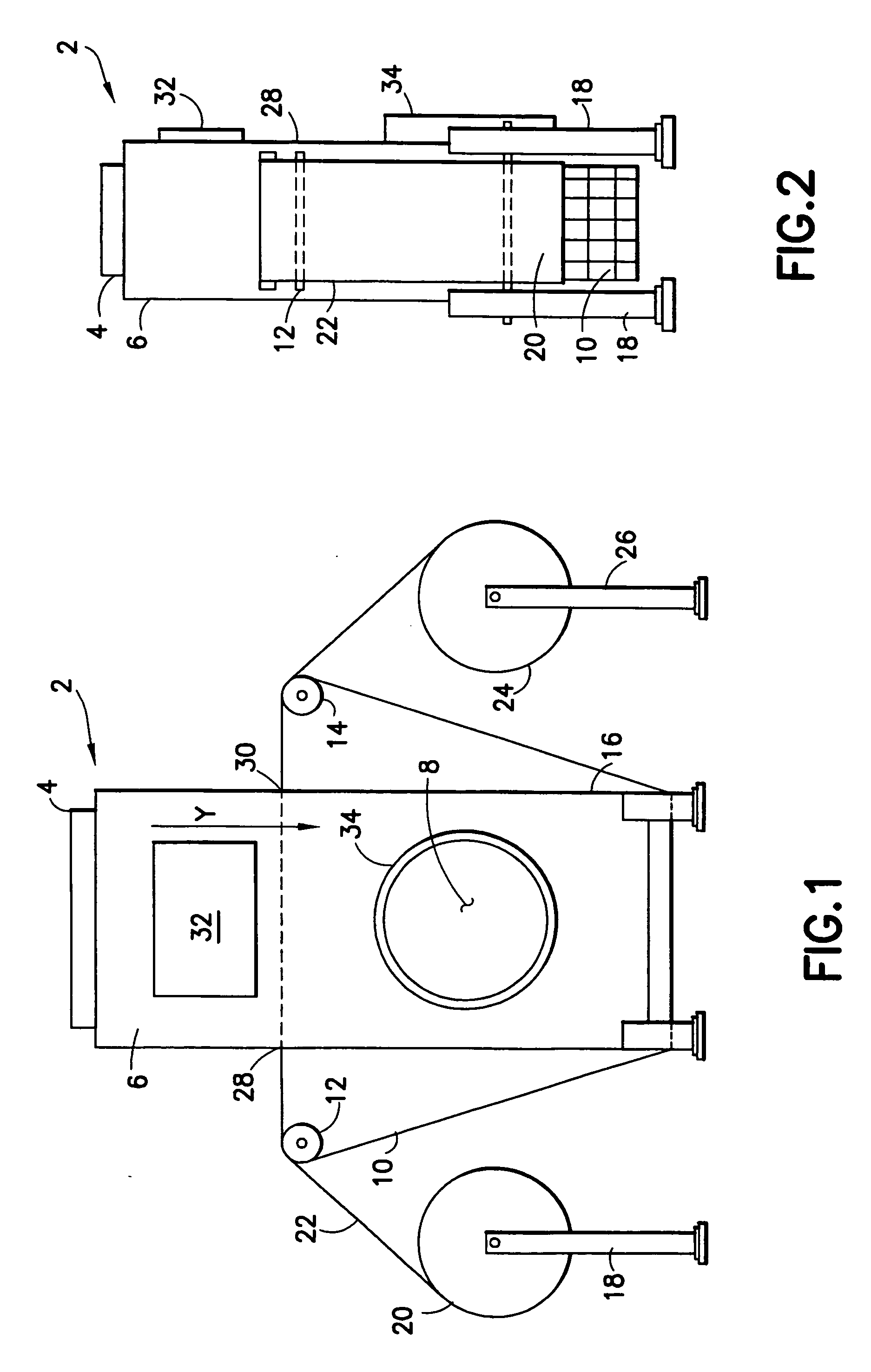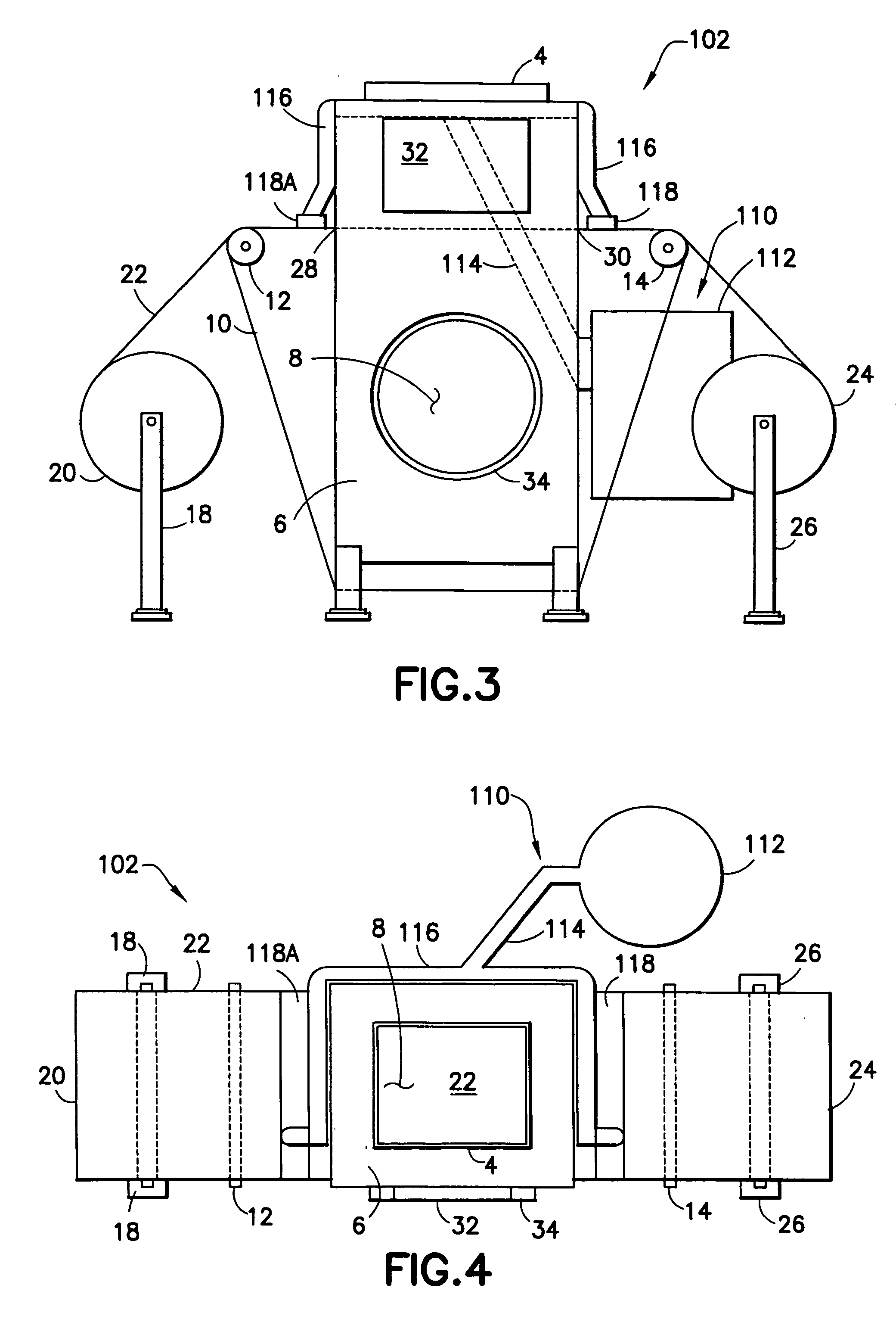Apparatus and method for removing contaminants from a gas stream
- Summary
- Abstract
- Description
- Claims
- Application Information
AI Technical Summary
Benefits of technology
Problems solved by technology
Method used
Image
Examples
example 1
Mercury Control
[0041] Wastewater treatment gas exhaust from a sludge incinerator was treated according to the present invention. Fine particulate and mercury were removed with a fine particulate filter media (as described above) followed by a section of activated carbon filter media. Mercury was removed at approximately 50% efficiency in a single pass across the filter in both tests, which used the equivalent of ⅜″ thick activated carbon-containing media described previously, as shown in Table 2. EPA Test Method 29, modified, was used for mercury determination. Multiple units in series, multiple passes through the same media and / or use of impregnated activated carbon, can be used to increase the removal efficiency from 50% to 95%+.
TABLE 2Efficiency of Mercury RemovalRun 1Run 2Filter media—Stage 1A8-AA8-AFilter media—Stage 2AC-M (3 / 16″× 2)AC-J (3 / 8″)Control Efficiency (%)55.3%47.3%
example 2
Ultra-Fine Particulate Control, Full Scale
[0042] Smoke from a waste incinerator having a particle size distribution as shown in Table 3 was treated according to the present invention by a full-scale version of the invention. Table 3 shows data on the particle size distribution of smoke filtered as in this example. The system demonstrated an average of 94% removal of the fine smoke particulate, including removing a majority of the ultra-fine particulate (i.e., under 0.55 micron size), over three one-hour tests.
TABLE 3Particle Size Distribution for Full-Scale Particulate TestFlowParticleRateTare WtFinal WtNet Wt% inCumulativeSize(ACFM)Stage(g)(g)(mg)Size Range(microns)0.5600.149730.151431.701.7398.34.00.5610.143450.145682.232.2696.09.00.5620.151410.153181.771.8094.26.00.5630.143060.144641.581.6092.64.10.5640.150180.152442.262.2990.32.60.5650.140530.1614120.8821.2069.11.30.5660.15110.1757624.6625.0444.10.820.5670.139960.1555515.5915.8328.20.550.56Backup0.165270.1930827.8128.24—Filte...
example 3
Ultra-Fine Particulate Control, Pilot Scale
[0043] A standardized particle sample having a known particle size distribution from 0.1-10 microns was treated in a pilot scale version of the present invention in air at 100 fpm using an electrically charged synthetic fiber filter. The ability of the electrically charged filter media at this gas velocity to remove fine particles is shown in FIG. 5 where the filtration efficiency was over 98% for the ultra-fine particle sizes in the sample.
PUM
| Property | Measurement | Unit |
|---|---|---|
| Temperature | aaaaa | aaaaa |
| Thickness | aaaaa | aaaaa |
| Thickness | aaaaa | aaaaa |
Abstract
Description
Claims
Application Information
 Login to view more
Login to view more - R&D Engineer
- R&D Manager
- IP Professional
- Industry Leading Data Capabilities
- Powerful AI technology
- Patent DNA Extraction
Browse by: Latest US Patents, China's latest patents, Technical Efficacy Thesaurus, Application Domain, Technology Topic.
© 2024 PatSnap. All rights reserved.Legal|Privacy policy|Modern Slavery Act Transparency Statement|Sitemap



